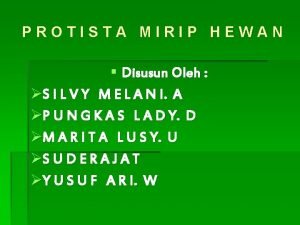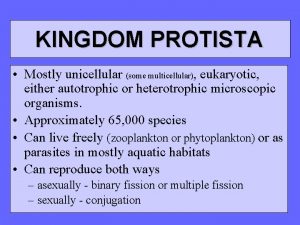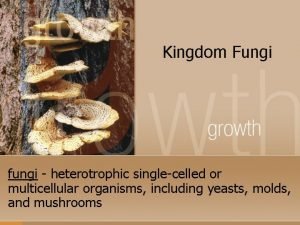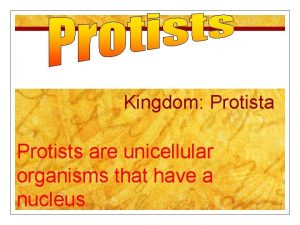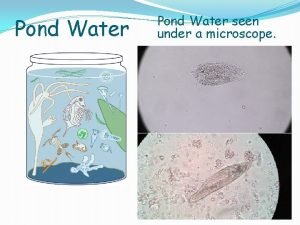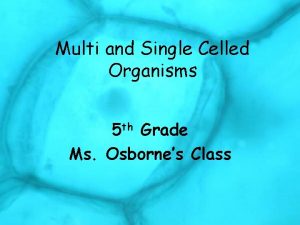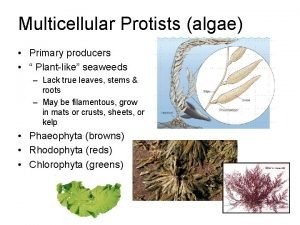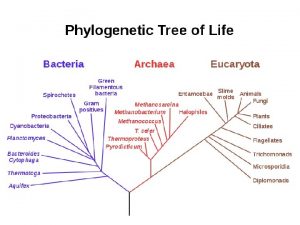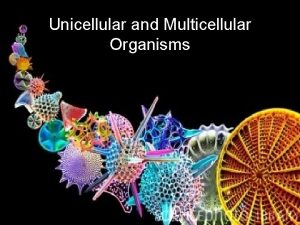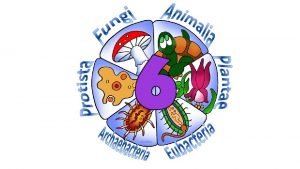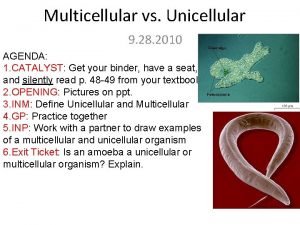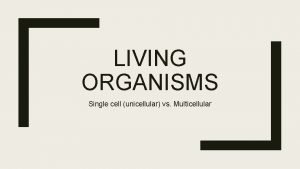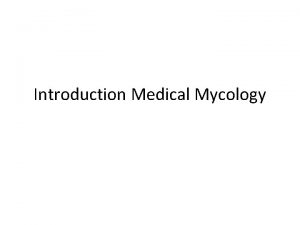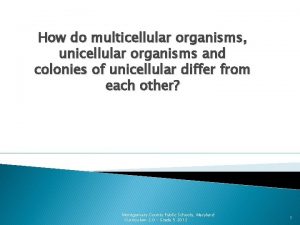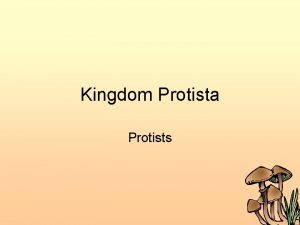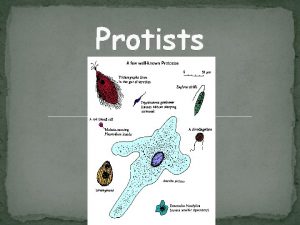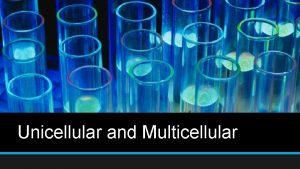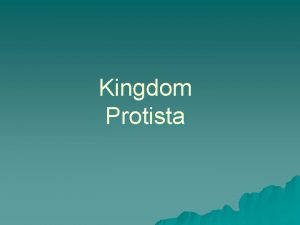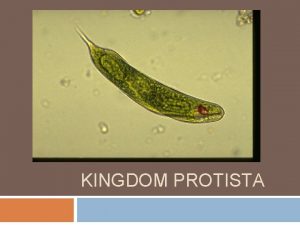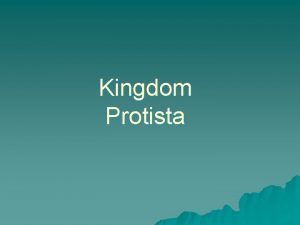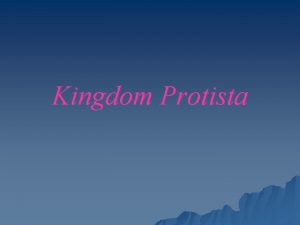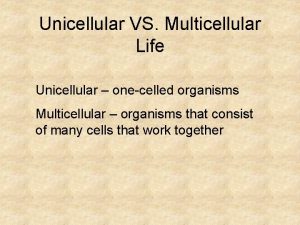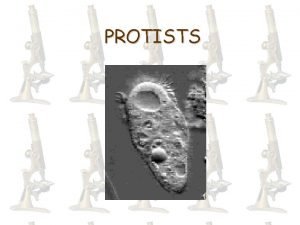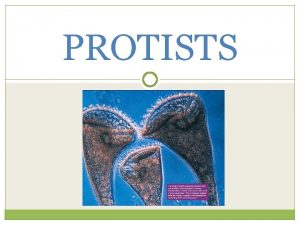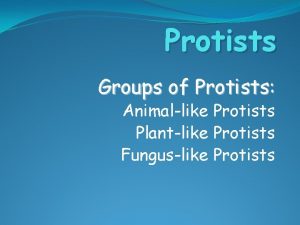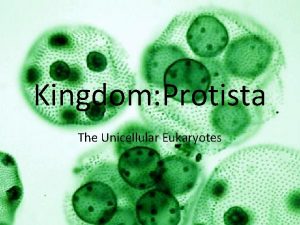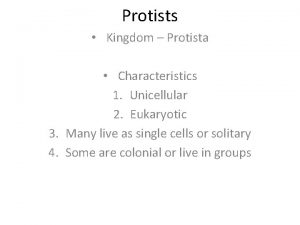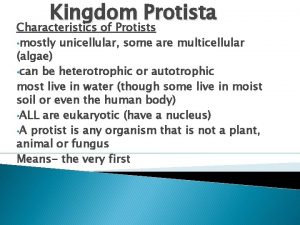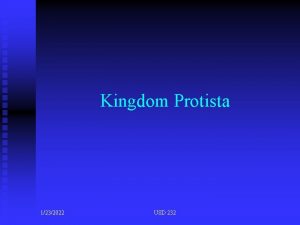Protists 1222022 1 Protista Kingdom Unicellular and Multicellular

























- Slides: 25

Protists 1/22/2022 1

Protista Kingdom Unicellular and Multicellular Heterotrophic and Autotrophic Eukaryotic Contains the most diverse organisms in one kingdom 1/22/2022 2

3 Kinds of Protists Protozoa—animal like protists Algae—plant like protists Fungus like protists 1/22/2022 3

Protozoan (animal-like protists) Grouped according to their method of movement: 1. Amoeba—move using a pseudopodia (false foot)an extension of their plasma membrane 2. Flagellates—have one or more flagella (whip-like tail) 3. Ciliates—have hair-like cilia that cover their bodies (ex: Paramecia) 4. Sporozoans—produce spores and are parasitic (ex: Plasmodium which causes malaria) 1/22/2022 4

Amoeba proteus • move and eat by use of pseudopods (temporary projections of the cytoplasm) 1/22/2022 5

1/22/2022 6

• some use flagella to move 1/22/2022 7

Paramecium caudatum • use cilia for feeding and movement (short hair-like projections) 1/22/2022 8

1/22/2022 9

1/22/2022 10

1/22/2022 11

1/22/2022 CLICK 12

Eyespot – Phototaxis and/or chemotaxis 1/22/2022 13

1/22/2022 14

1/22/2022 15

Algae (plant-like protists) 1. Euglenoids—can be autotrophic or heterotrophic-use flagella for movement 2. Diatoms—have shells composed of silica (hard shell; large component of phytoplankton) 3. Dinoflagellates—have 2 flagellaseveral species cause fish kills (ex : ”red tide”) 1/22/2022 16

Euglena gracilis 1/22/2022 17

Stentor coeruleus 1/22/2022 18

Diatoms 1/22/2022 19

Dinoflagellate 1/22/2022 20

Sounds AWESOME right? ! Sadly…not quite true. BEWARE OF BIASED and BOGUS claims by some in the scientific community. Importance of peer research! 1/22/2022 21

Fungus-like Protists Fungus-like in that they decompose organic materials Examples include slime molds, water molds, and downy mildew 1/22/2022 22

Slime mold 1/22/2022 23

mildew 1/22/2022 24

Phytophthora infestans 1/22/2022 25
 Protists stationary or mobile
Protists stationary or mobile Phyrophyta
Phyrophyta Protists unicellular or multicellular
Protists unicellular or multicellular Are protists unicellular or multicellular
Are protists unicellular or multicellular Are fungi single celled or multicellular
Are fungi single celled or multicellular Is kingdom fungi unicellular or multicellular
Is kingdom fungi unicellular or multicellular Old kingdom middle kingdom new kingdom
Old kingdom middle kingdom new kingdom Old kingdom middle kingdom new kingdom
Old kingdom middle kingdom new kingdom Youtube
Youtube Capital of egypt during the old kingdom
Capital of egypt during the old kingdom Protists are unicellular
Protists are unicellular Unicellular and multicellular living things
Unicellular and multicellular living things Multicellular definition
Multicellular definition Unicellular and multicellular organisms
Unicellular and multicellular organisms Multicellular organisms definition
Multicellular organisms definition Unicellular and multicellular organisms venn diagram
Unicellular and multicellular organisms venn diagram Single celled life form
Single celled life form Are protists producers
Are protists producers Animalia.
Animalia. Is algae unicellular or multicellular
Is algae unicellular or multicellular Archaebacteria multicellular or unicellular
Archaebacteria multicellular or unicellular Is bacteria unicellular or multicellular
Is bacteria unicellular or multicellular Multicellular vs unicellular
Multicellular vs unicellular Capsulated fungi examples
Capsulated fungi examples Diatoms unicellular or multicellular
Diatoms unicellular or multicellular Oedogonium dan spirogyra merupakan ganggang yang berbentuk
Oedogonium dan spirogyra merupakan ganggang yang berbentuk

